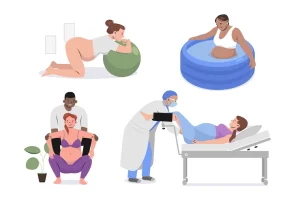What is an Atrial Septal Defect?

A normal heart has a muscular wall known as the atrial septum that separates the organ’s upper chambers, or the left and right atria. If there is a defect in this wall, it’s known as an atrial septal defect.
In a normal newborn’s heart, the heart’s left chambers pump oxygenated blood to the body, while the right chambers pump unoxygenated blood to the lungs. An atrial septal defect allows blood to travel from the left side of the heart to the right side (because the pressure in the left side is higher), and then into the lungs instead to the body. This puts stress on the heart and causes health problems.
The most common type of atrial septal defect is known as a patent foramen ovale. The foramen ovale is a natural hole in a newborn’s atrial septum that closes immediately after birth. This hole allows blood to bypass the lungs during development.
What symptoms does an atrial septal defect have?
Atrial septal defects range in size. Generally, small defects don’t affect the heart’s function, cause symptoms, or need treatment. In fact, many small atrial septal defects close on their own. Medium and large atrial septal defects are more likely to leak significant blood from one atrium to the other. They are also more likely to require treatment and usually do not close on their own.
There are three major atrial septal defect types. The most common atrial septal defect, the secundum, is in the middle of the atrial septum. This defect type affects about eight in 10 babies born with atrial septal defect. Primum defects affect the lower part of the atrial septum. Primum defects don’t heal on their own and often are associated with heart valve problems. Sinus venosus defects occur in the upper atrial septum. They also don’t close on their own.
Large atrial septal defects might cause a heart murmur, which physicians hear through their stethoscopes as an abnormal sound in the heartbeat. Other symptoms that can begin after birth through childhood include breathing difficulty, frequent respiratory infections, and shortness of breath with activity.
How are atrial septal defects diagnosed and what is the treatment?
Physicians can diagnose atrial septal defect with a clinical exam (by listening for a murmur) and an echocardiogram. If that’s inconclusive, other tests might be necessary.
Effective treatments for children with large atrial septal defects include closing the hole by way of cardiac catheterization or, in more complex cases, fixing it with open heart surgery. Even when they don’t have many symptoms, children might be treated to prevent heart problems that can occur decades later. Long-term complications from atrial septal include right heart failure, arrhythmias (or irregular heartbeats), stroke, or pulmonary hypertension (increased pulmonary artery pressure). These can be prevented with early treatment.
The long-term outlook for children with this congenital heart defect is excellent. Even those who have surgery or catheterization to correct the deformity can usually resume a normal life after healing from the procedure.
Sources:
- National Heart, Lung, and Blood Institute
- Types of Holes in the Heart.
U.S - National Library of Medicine
- Atrial Septal Defect.
- American Heart Association
Powered by Bundoo®
—
Nabta is reshaping women’s healthcare. We support women with their personal health journeys, from everyday wellbeing to the uniquely female experiences of fertility, pregnancy, and menopause. You can track your menstrual cycle and get personalised support by using the Nabta app.
Get in touch if you have any questions about this article or any aspect of women’s health. We’re here for you.










